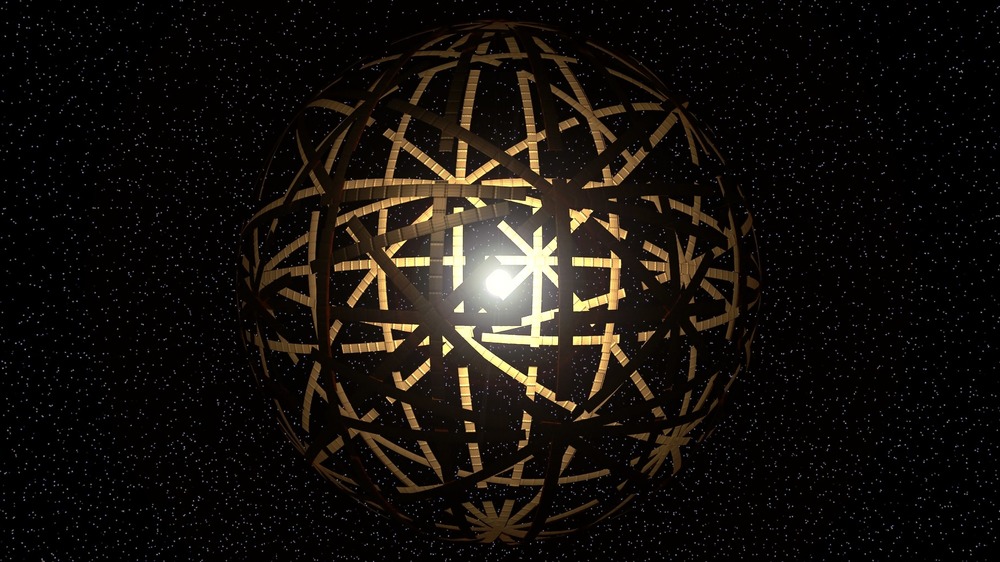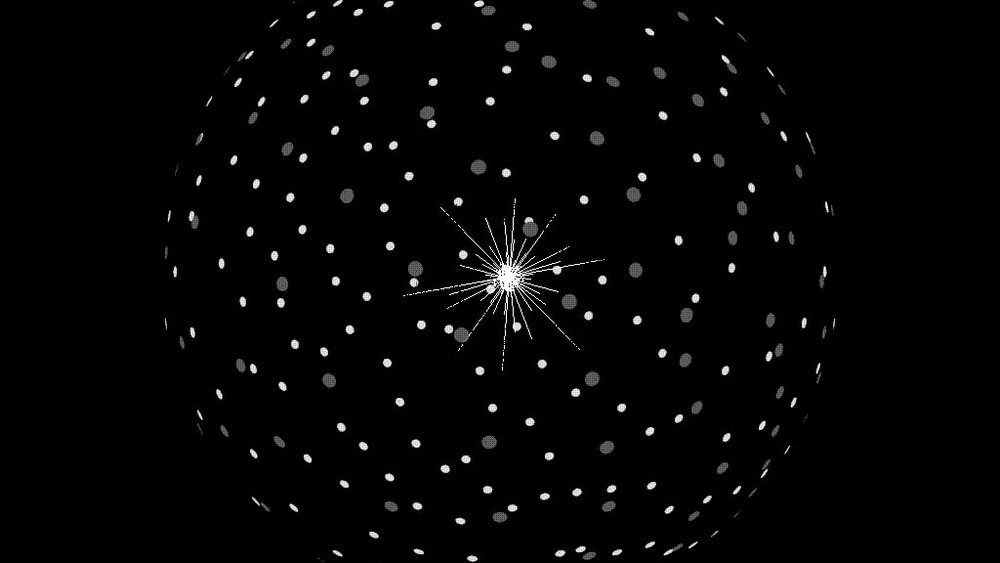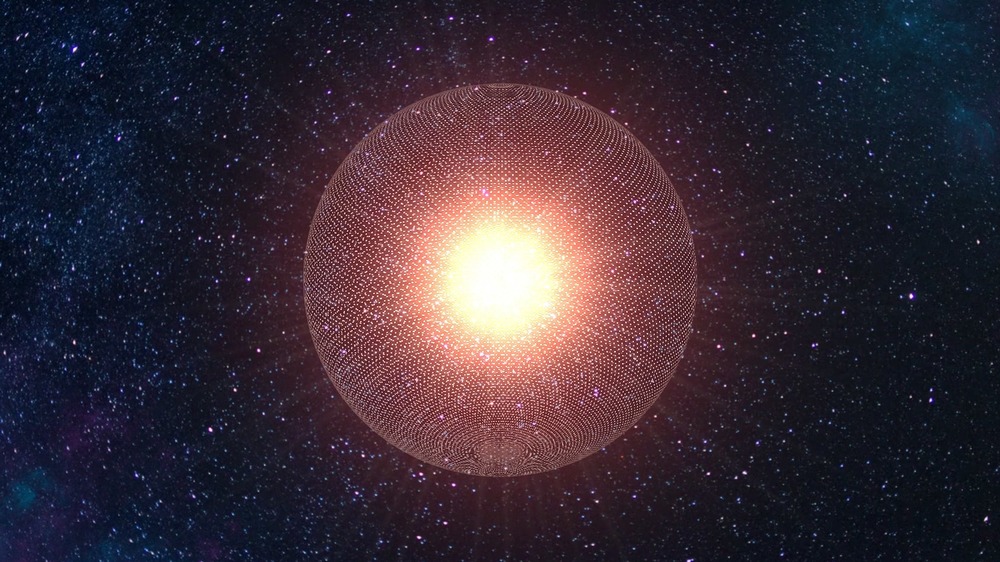Inside The Crazy Proposal To Harness The Sun's Energy
Over the past century, one of humanity's defining problems has been the need for energy. As our population and level of industrialization increase over time, we consume more and more energy each year. Right now, most of our energy comes from fossil fuels — the leading cause of global warming. Wouldn't it be amazing if there were a nearly-unlimited energy source that we could borrow from instead? What about the sun?
Per Popular Mechanics, Earth's sun emits nearly 400 septillion watts of energy per second — a trillion times more than humanity's entire energy consumption. Unfortunately, only a small fraction of that energy reaches Earth, and even with technologies like solar panels, we can only harness an even smaller fraction of it. Imagine what humanity could do if we could obtain most, if not all, of the sun's energy output.
As it turns out, that might be a technical possibility. Meet the "Dyson sphere," the massive hypothetical structure pictured above. According to Space.com, the Dyson sphere has its origin in a thought-experiment by the British-American theoretical physicist Freeman Dyson. Writing in 1960, Dyson theorized that the energy needs of an alien civilization would likely grow exponentially, even if their population only grew by 1 percent each year. As a result, Dyson speculated that an advanced alien species would eventually choose to harness full energy output of their home star, and would probably do so by encasing that star in a massive metallic shell.
A giant, metal 'Dyson sphere' could enclose the sun for its energy
Dyson's short paper was really just a thought experiment. It concluded by suggesting that astronomers look for signs of distant Dyson spheres as possible evidence of intelligent alien life-forms. Regardless, scientists and fiction writers alike took Dyson's idea and ran with it. Topping their list of inquiries: "Could humans ever construct such a device?"
Per Popular Mechanics, the answer appears to be yes, though not any time soon. An enormous Dyson sphere would be far too difficult to build with our current technology, but could be within the realm of possibilities for future humans. Let's consider what a successful Dyson sphere might look like.
Researchers quickly realized that a Dyson "sphere" wouldn't do; a solid sphere around our sun would be gravitationally unstable, and at risk of constant asteroid bombardment. A more stable system, they argued, would be a "Dyson swarm" — thousands (or millions) of energy-collecting satellites all in orbit around the sun. These satellites could function like solar panels, absorbing our sun's energy, but more likely, they'd act as mirrors, redirecting sunlight to specific energy stations in space. From those stations, energy could be beamed directly to wherever it's needed in the Solar System. Constructing and launching each satellite would be difficult, of course, but would become easier over time, as each new satellite could be used to help power the construction of the following ones.
Difficult, but aliens might have done it already
Unfortunately, in order to create a big enough swarm of satellites to surround the Sun, we'd need a lot of raw material. "A lot" is actually an understatement; per Popular Science, scientists estimate that we'd need to disassemble at least one entire planet to get enough raw stuff to build an effective Dyson swarm. Mercury is often suggested to be the most viable candidate, as its proximity to the Sun makes it the easiest to destroy and reassemble into satellites. But Mercury's metal alone might still not be enough, and future humans may need to tear apart other planets or asteroids for spare parts.
At this point, we're likely talking about a centuries-long construction project, one that makes humans sound like voracious termites gobbling up the Solar System. Converting humanity's energy usage to 100 percent solar would be a great way to fight climate change, but global warming needs far more immediate solutions than a giant Dyson sphere a millennium from now. Many argue that it's probably best to just forget the whole Dyson sphere idea entirely. Mercury would certainly agree.
Dyson spheres are a complicated, difficult, and fascinating prospect. Could Freeman Dyson be right? Is the universe already teeming with alien-built Dyson spheres? One ScienceAlert article suggests that scientists have found two stars with unusual light patterns that could be indicative of Dyson spheres. But that's extremely unlikely; for any weird discovery, there's almost always a non-alien explanation.


